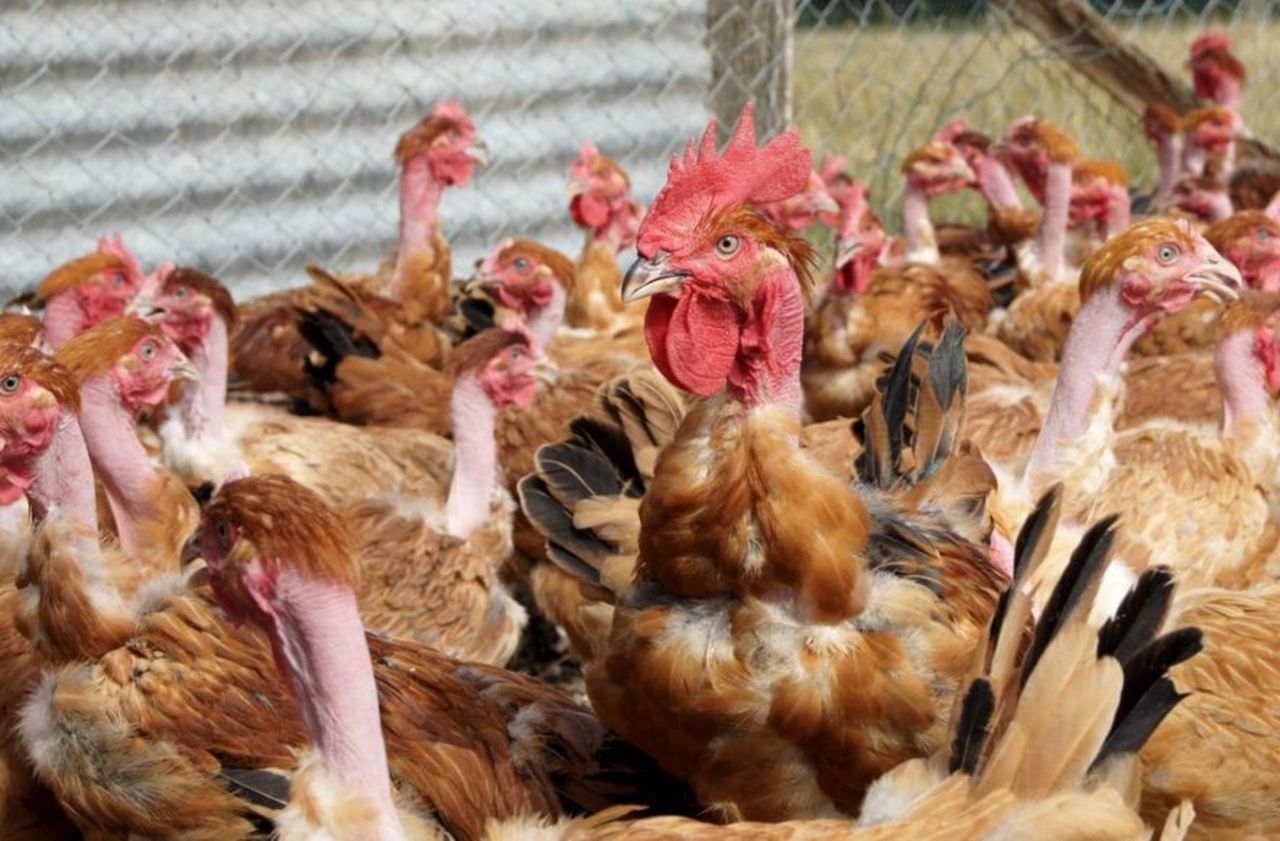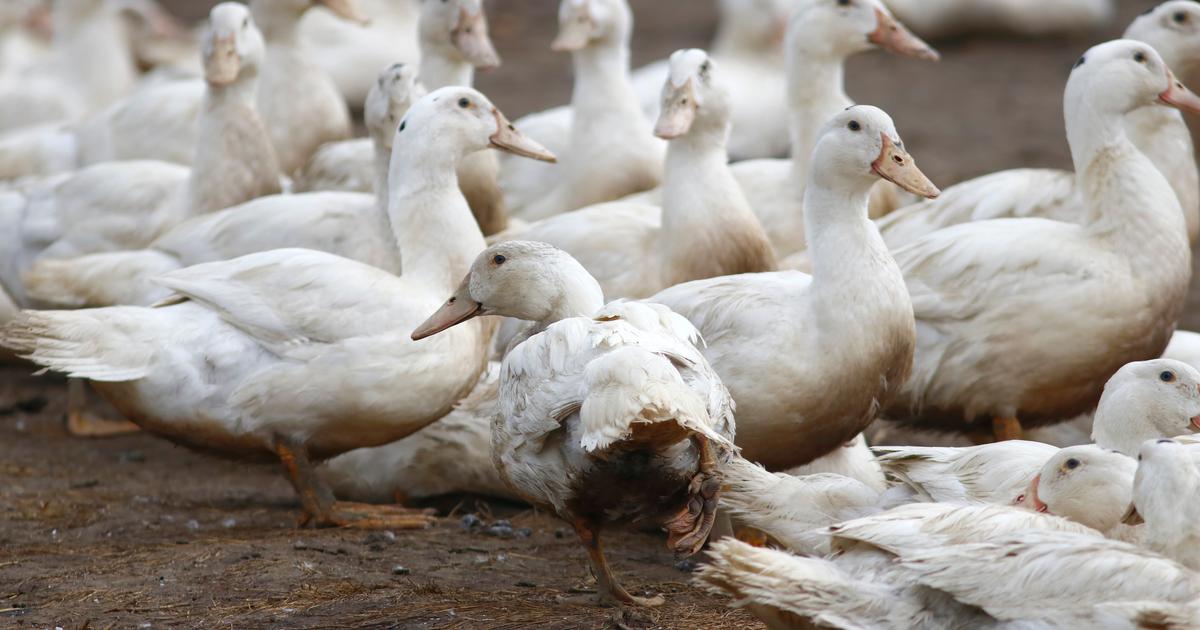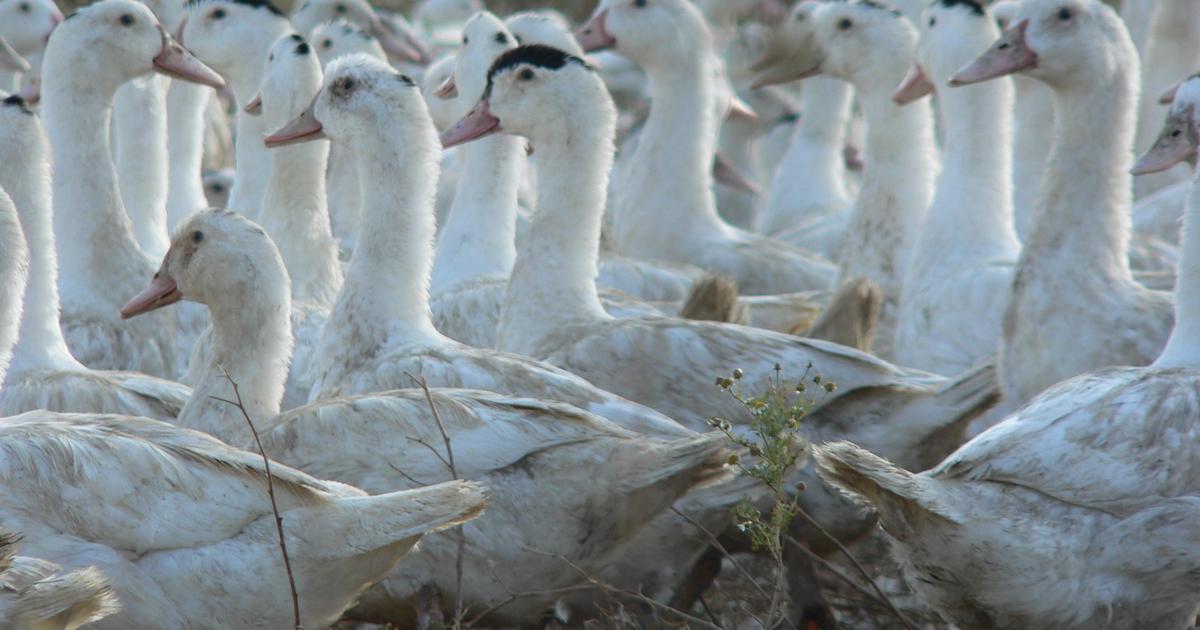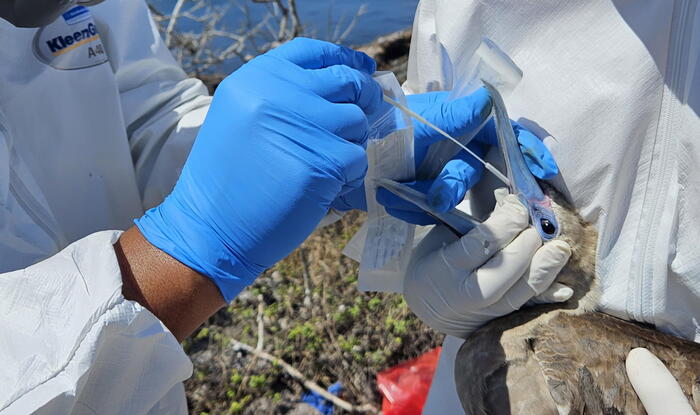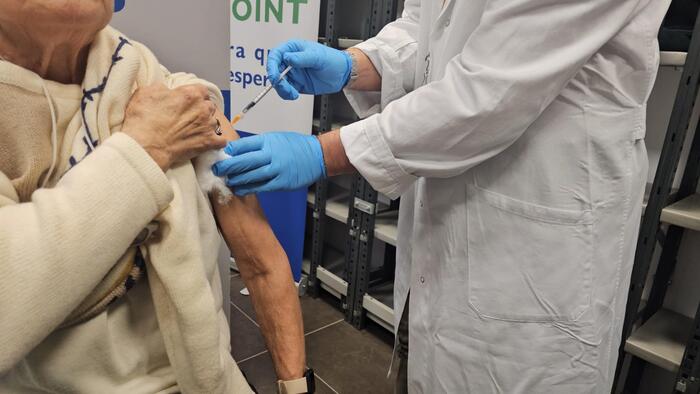Avoid mass slaughter of ducks, chickens and other poultry at all costs.
As a precautionary measure, the French health authorities have just placed 45 departments on Thursday at “high risk” of avian flu.
In recent weeks, this virus, very rarely transmissible to humans, has been detected in several farms in northern Europe.
If France is currently spared, there is great concern among poultry producers, and in particular foie gras on the eve of the end of the year celebrations.
The poultry industry remains traumatized by what is known as “chicken Ebola” and the economic damage it caused during the winters of 2015-2016 and 2016-2017.
Where does this new episode come from?
After the appearance of outbreaks in Russia and Kazakhstan this summer, the virus has progressed westward, recently reaching the Netherlands, Germany and since Monday Great Britain.
215,000 hens will thus be slaughtered in the coming days on a Dutch farm.
Map of avian influenza cases detected since June 2020 in Europe / ESA Platform
“The French territory is affected by these migrations which are in full swing at the moment;
the peak of migratory arrivals in France often takes place in November, ”warns the National Biodiversity Office to the ESA Platform (Animal Health Epidemiology).
"It is therefore necessary to remain vigilant until their departure in prenuptial migration towards the northeast, at the end of winter / beginning of spring", she adds.
The virus, which is particularly resistant in winter, can be spread by direct contact with secretions or through food and water.
How are French breeders preparing?
Since the end of October, containment measures had been ordered in so-called special risk areas (ZRP), that is to say sheltering wetlands frequented by migratory birds.
We find a certain number of them in Loire-Atlantique or in Loiret, in Bresse.
From now on, the level of “high risk” implies, for professional breeders as well as individuals owning a henhouse, to lock up poultry which usually evolve in the open air or to lay nets to prevent any contact with wild birds.
Exemptions are hoped to maintain, even without a net, a narrowed outdoor route after a visit from the veterinarian and approval from the prefect.
The objective is not to "stress" the animals too much.
The gatherings of live poultry, at fairs for example, as well as the transport and release of game birds by hunters are also prohibited.
Newsletter - Most of the news
Every morning, the news seen by Le Parisien
I'm registering
Your email address is collected by Le Parisien to enable you to receive our news and commercial offers.
Learn more
Areas said to be at particular risk (in blue) and departments at high risk (in red) / Ministry of Agriculture
"We ask breeders for very active surveillance to alert veterinarians if normal mortality appears," adds Marie-Pierre Pé, director of the inter-professional Cifog in the foie gras sector, believing that "we are not in the shelter that the virus passes ”despite everything.
What are the economic risks?
The second wave, this is what operators fear, already hit by the Covid-19 crisis, in particular due to the closure of restaurants and bars.
If detected in France, this virus would put poultry producers in great difficulty, with the closure of export outlets.
In 2016-2017, the previous avian flu epidemic had significant economic consequences in Europe.
At the time in Italy, 83 outbreaks of H5N8 infection had been identified, 2.7 million birds had been culled and eradication costs had amounted to some 40 million euros.
In France, the production of foie gras had fallen by 30%.
READ ALSO>
Foie gras: how the sector, weakened by Covid-19, is trying to bounce back
With each episode of avian flu, the debate on preventive culling also returns, a French exception which raises the question of transport and the break-up of the industrial system.
Is there a direct danger to humans?
No risk does not exist.
However, the avian virus discovered here (subtypes H5N8 and H5N5) has never infected humans before.
This virus, which infects wild birds and domestic birds, is "without threat to humans and is not exceptional", regularly remind the State services.
This Thursday, the ministry also specified that "the consumption of meat, fatty liver and eggs does not present any risk for the man".
Note, however, that a certain version, the H5N1 subtype, can prove fatal in humans in the event of prolonged and direct contact with a bird, but this is again an exception.
Still circulating in poultry populations in parts of Asia and North East Africa, this virus has caused illness and death since 1997.
As the crisis of the new coronavirus has unfortunately proven, it is impossible to rule out the track of a new strain that would escape our immune system.
As the Institut Pasteur indicates on its website, the H5N1-type virus itself has a great capacity for mutation and exchange with influenza viruses belonging to other subtypes that infect other species.
Or, can we read, the "door open to a pandemic".

